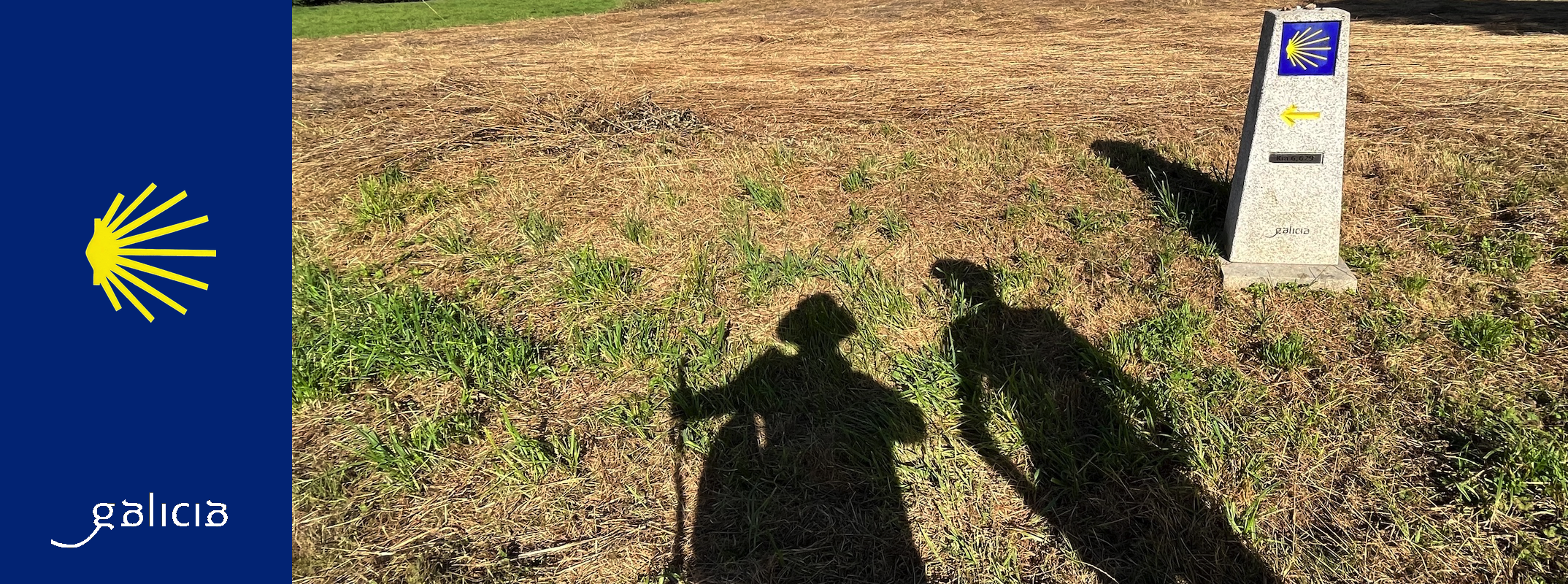Last month, my husband and I set out to do the Camino de Santiago (the “Way of Saint James”, as it’s called in Castilian). We decided to do the Camino Inglés (the English Route), as we had already done the Camino Francés (the French Route) from Sarria last summer. This is the first in a series of posts that I will publishing about the 110km hike through the beautiful Galician countryside - a great adventure that is worth going on at least once in your life.
A Thousand-Year-Old Pilgrimage
O Camiño de Santiago (as the Way of St. James is called in Galician) is a pilgrimage to the city of Santiago de Compostela from different starting points. I will be using Camiño and Camino interchangeably in this post as pilgrims would encounter both terms along the way, and also because I like using Galician terms as a homage to my husband’s heritage and homeland.
The pilgrimage traces its beginnings to the discovery of relics attributed to St. James the Great (Santiago el Mayor), the patron saint of Spain, in the 9th century. One traditional account tells the story of how St. James’ remains were brought to the Iberian peninsula by two of his disciples, buried, and eventually lost to time, until the tomb was rediscovered in the 9th century by a hermit called Pelayo (not to be confused with Don Pelayo, the first King of Asturias). A local bishop declared the remains as belonging to St. James, and reported it to the Asturian monarch, Alfonso II, who became the first pilgrim by venturing to the site using a route now known as “Camino Primitivo”.
The site is now known as Santiago de Compostela, combining the Spanish name of St. James and the Latin term “composita tella”, a eufemism for cemetery.
The English Way
While there are a number of pilgrimage routes to Santiago de Compostela across Spain, the most traversed Caminos are the Francés, Inglés, Portugués and Primitivo. There’s also a hiking route that starts from Santiago de Compostela that ends in Fisterra (from the Latin “finis terrae”, literally the “end of the earth”).
The English Way was the route that pilgrims from the British Isles and Scandinavia took to Santiago de Compostela, until it fell into disuse after Henry VIII of England broke ties with the pope and established the Anglican Church, one of the most important events during the Protestant Reformation which swept through Northern and Central Europe.
We have only done Camiños Francés and Inglés so far, but there is a such a big difference in terms of the experience we got from each one that it’s worth listing some of the points of comparison here.
Camiño Inglés vs. Camiño Francés
-
Popularity - Based on our experience, the Camiño Francés is by far the more popular route, because when we did it last year, the continuous stream of pilgrims wishing you “¡Buen camino!” meant that my husband and I rarely found ourselves alone (which also made it difficult to answer an urgent call of nature). In contrast, my husband and I had the route to ourselves most of the time in the open country when we did the Camiño Inglés - despite the fact that we did both at almost the exact time of the year.
-
Terrain - The Camiño Inglés goes through a steep, hilly landscape that makes it the more difficult route in terms of terrain. It also goes through more highways (i.e. a harsh urban landscape) and more open fields (i.e. less cover from the sun). On the other hand, the Camiño Francés has a more pleasant terrain, with idyllic landscapes filled with pastures, gently sloping hills, and forested areas that I called “enchanted forests” because they reminded me of scenes from Sleeping Beauty (1959).
-
Available Services - In addition to being less traversed, the lands along the Camiño Inglés were also sparsely populated in comparison to those in the Camiño Francés. As someone who loves trinkets for souvenirs, I can recall only a handful of souvenir-refreshment stands along the Camiño Inglés (excluding those in towns), and two of them were unmanned! This is in stark contrast to the numerous shops that we encountered along the Camiño Francés, where pilgrims had the luxury of not having to pack a bottle of water because the next refreshment stand was always just up ahead.
For first-timers, I would recommend doing the Camiño Francés because it provides a fuller and more exciting Camino experience that whets one’s appetite for more. On the other hand, the more quiet Camiño Inglés allows more time for thoughtful contemplation, encouraging one to reconnect with themself (and their partner) while marveling at the beauty that life can offer.
A Five-Day Journey
We followed a five-day route that started from the city of Ferrol (the birthplace of the Spanish Dictator, General Franco). The other option was to start from the charming city of A Coruña, but this was not an option for us because we already live in that city and also because the route is shorter, which meant we would have been disqualified from receiving the Compostela (in this context, the word refers to the document issued by the Cathedral’s Pilgrim Office).
While a pilgrim is free to organize their route by dividing it into as many stages as they please, we followed the route organized by Tu Buen Camino, a company that specifically caters to Camino pilgrims. I came to appreciate the route set by Tu Buen Camino because it seemed to have been carefully planned by evenly spreading the difficult parts across the entire route, as opposed to going about it on our own - we heard stories of people not being able to complete the Camiño Inglés because they made the mistake of trying to cover too much ground in a single walking stage.
Here’s a brief summary of our Camiño Inglés itinerary, where I’ve included screenshots of the data logged on the Apple Fitness app to show the distance, the elevation, and the time we took to complete each stage. I will be covering this in more detail in a future post.
-
Day 0: Arrival in Ferrol
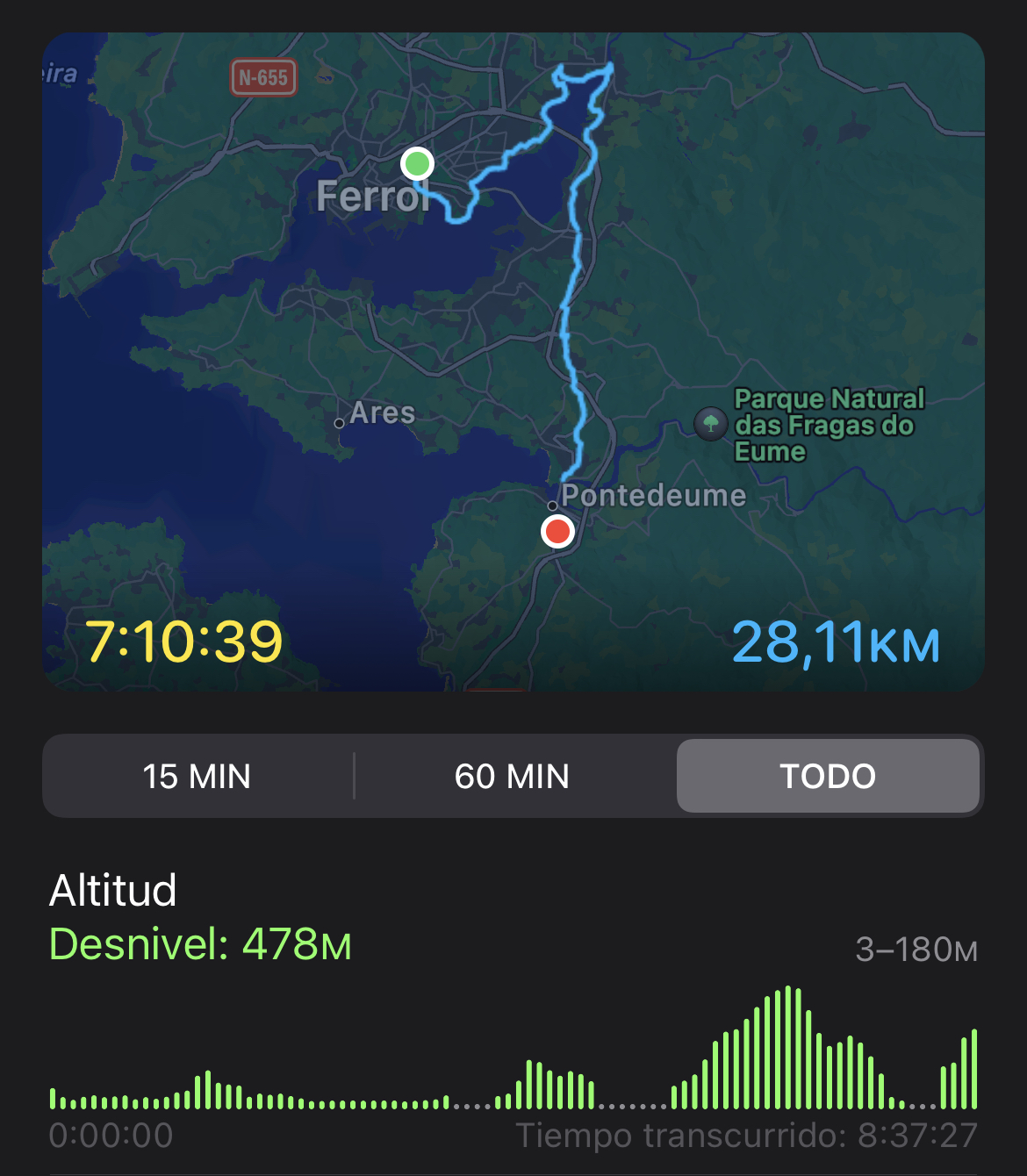

- Day 3: Betanzos to Bruma (24.9 km)
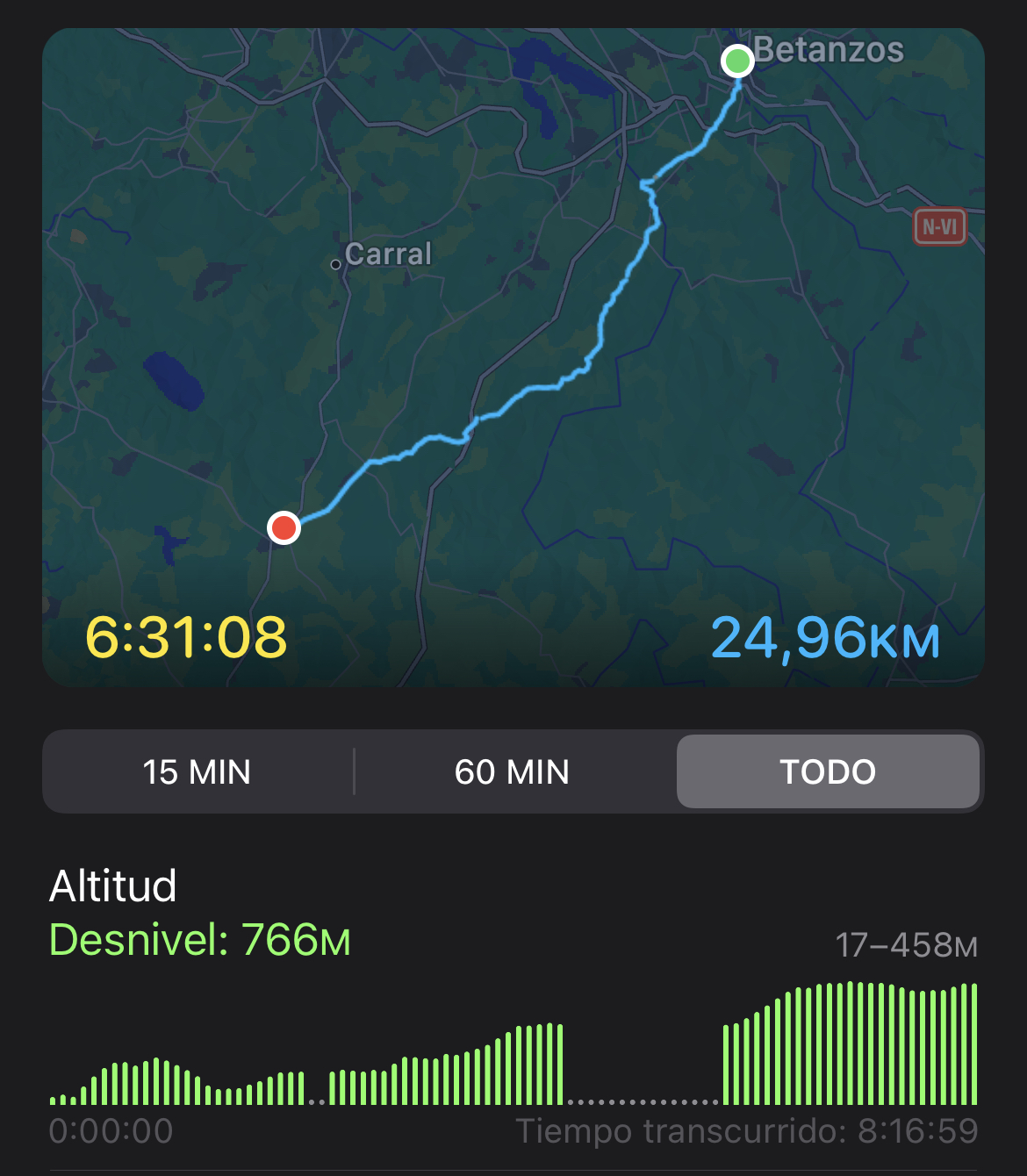
- Day 4: Bruma to Sigüeiro (24.2 km)
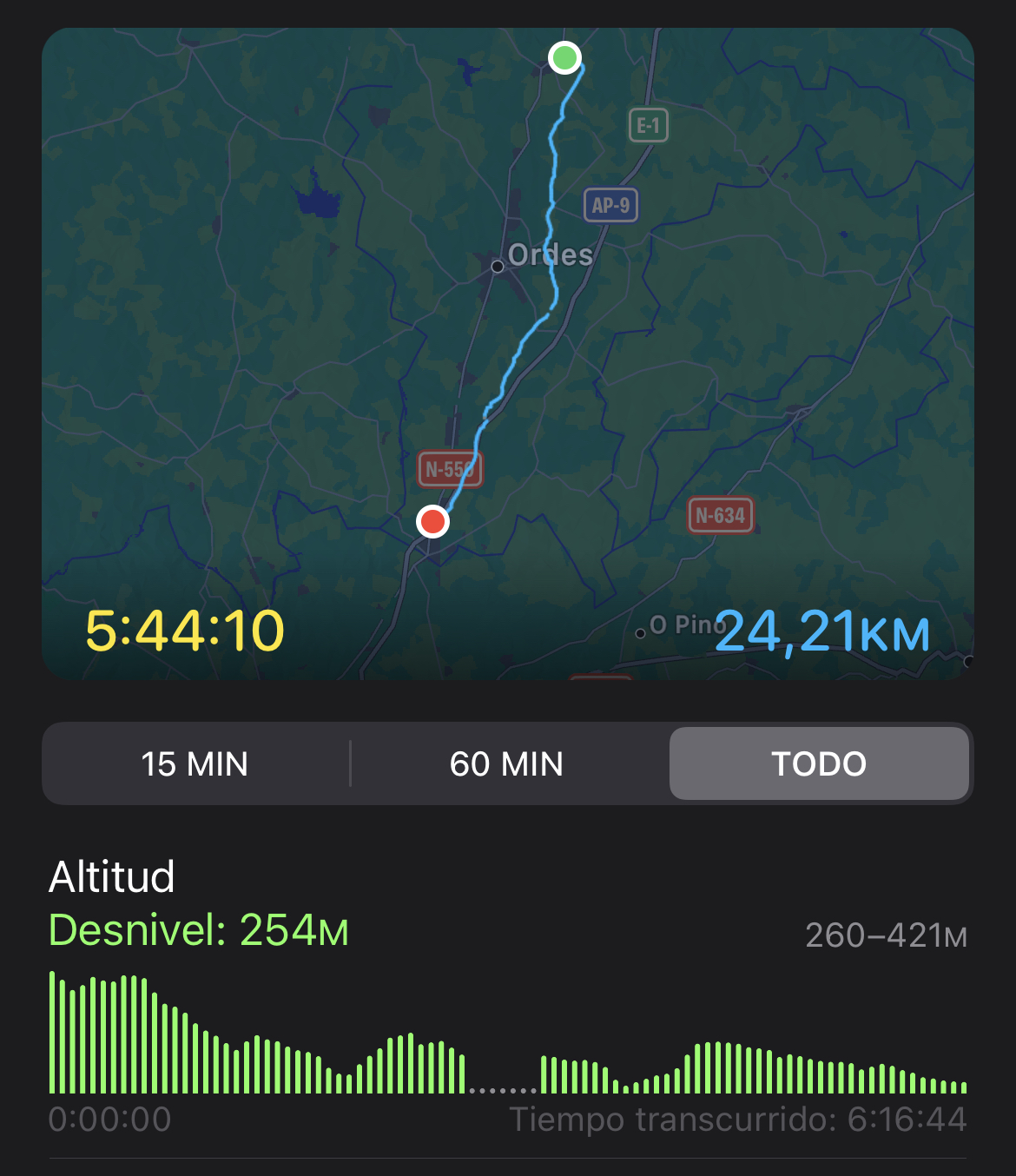
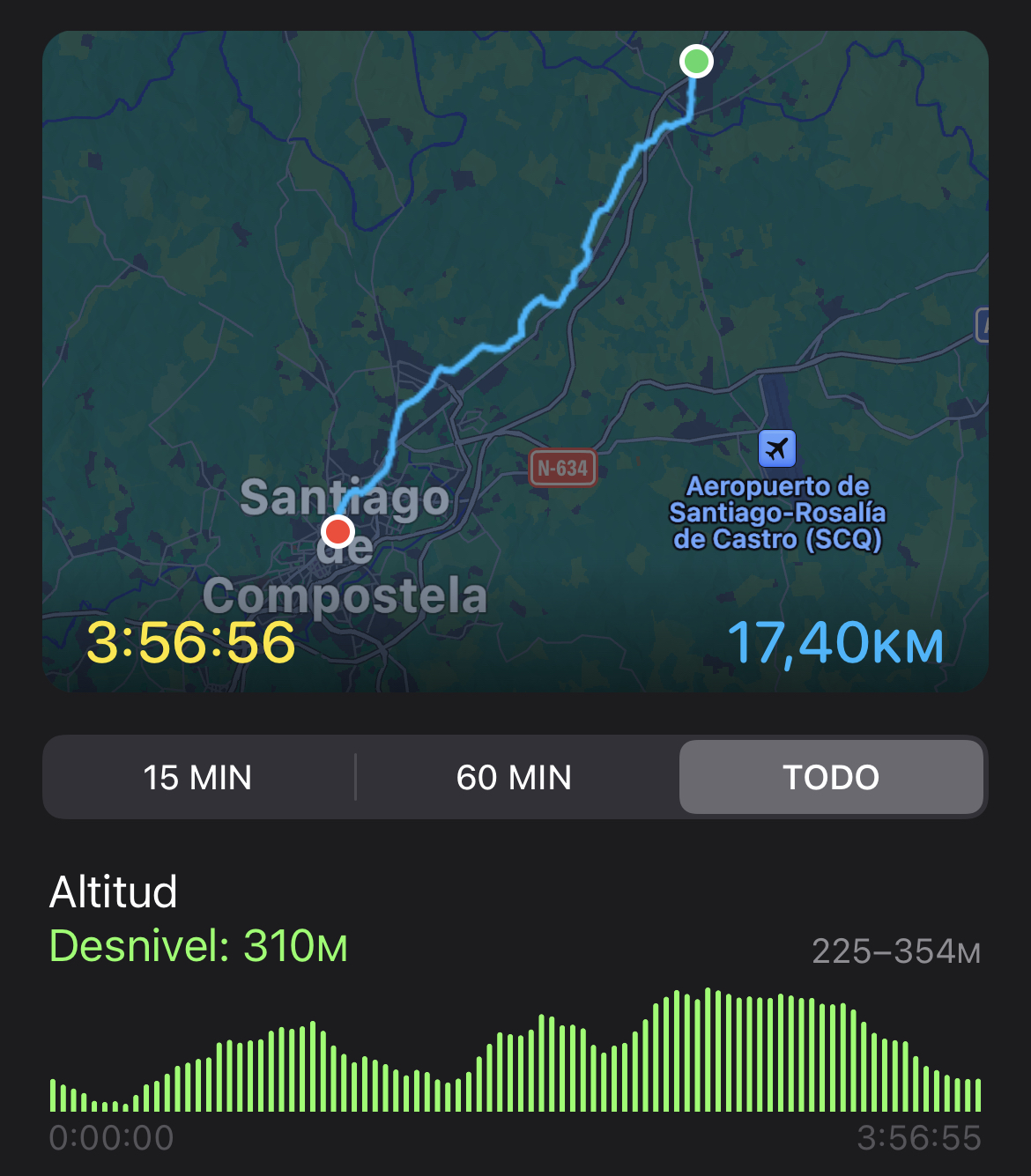
Organizing the Pilgrimage
Just as a pilgrim has the freedom to split their chosen path into walking stages that best suits their needs, they can also organize the journey as they see fit, which can be divided into two main categories.
DIY Pilgrimage
While my husband and I have never done a DIY Camino, we know that organizing one’s Camino de Santiago journey on one’s own requires thorough research and, to be honest, prayer (or for non-religious folks, luck) - because a lot of things can go wrong during the Camino.
To aid one’s research, the Xunta de Galicia has a website dedicated to providing interested pilgrims with as much information as they need to prepare for their journey, including the most important - accommodation.
DIY Accommodation
There are three types of lodging that a pilgrim can use throughout their journey:
- Public albergues (pilgrim hostels run by the Xunta de Galicia)
- Privately-owned albergues
- Hotels or bed & breakfasts
Albergues are, of course, the cheaper option but also have the same disadvantages as those found when staying in a hostel (e.g. shared sleeping quarters and bathrooms, risk of personal belongings being stolen, etc.).
In addition, albergues run by the Xunta de Galicia impose certain rules, such as a one-night limit on stays, lights out at 10:30pm, and an early check-out at 8am.
Another thing to be aware of when it comes to public albergues (as opposed to booking a hotel room in advance) is that they are accessed on a first come, first served basis. This was explained to me by my husband on my first Camino last year (Camiño Francés), after I commented on how pilgrims always seemed to be in a hurry to get to the next stop.
Backpacks & Luggage
Many pilgrims (if not the majority of them) make the pilgrimage as backpackers, carrying all of their belongings with them across the entire route. While this is the kind of pilgrim that many people would regard as the “traditional” type, times have changed to accommodate a new kind of pilgrim - the one who needs a luggage but can’t carry it with them throughout the entire journey.
This is why Correos, the Spanish national postal service, has come to offer luggage transportation from one walking stage to another. This is especially useful for pilgrims from overseas who need a luggage for travel.
Nonetheless, it must be noted that not all albergues accept luggage delivery from Correos, so this must be considered when planning one’s journey.
Using a Professional Service
As I mentioned above, we used Tu Buen Camino’s services in order to be able to better focus on maximizing our enjoyment of the experience and to minimize the stress that comes with organizing an almost week-long journey.
Just to set things straight, this is not a sponsored post. Having said that, my husband and I are pleased with Tu Buen Camino’s services, ever since he used them on his first Camino in 2021. This is because Tu Buen Camino organizes your Camino itinerary for you.
The service offers Premium and Adventure options, the main distinction being the type of accommodation you will be given throughout your journey.
Accommodation
We didn’t have to worry about finding a place to stay during the pilgrimage, which - let’s face it - is a stressful and time-consuming part of any travel because of factors such as budget constraints, location, decision paralysis, and, in our case, going through numerous online reviews.
On the other hand, it is important to note that since Tu Buen Camino chooses the accommodation for you, you have no choice but to go with what they assign - this can mean being assigned a B&B near the top of a steep hill in Pontedeume after a 28-km hike, but it can also mean being assigned a beautiful hotel room in Betanzos with a wonderful lady as the concierge. It’s like opening a surprise box of chocolates.
It is worth noting that we used the Premium service, which gave us a private room at each lodging. Tu Buen Camino’s Adventure option gives their clients a bed at private albergues.
Meals
We decided to include meals in our package, which meant that the accommodation at each stop needed to provide us with a dinner and a breakfast.
-
Dinner: Many of the lodgings on this Camino did not have an in-house dinner service, which meant that they had a partner restaurant where we went to have dinner as part of the package.
-
Breakfast: On this Camino, every accommodation provided breakfast service (as opposed to last year’s Camiño Francés where several of the accommodations had a partner eatery for breakfast). The main disadvantage of this arrangement is that the start of breakfast service will determine how early you can start the day’s journey. You can always skip breakfast and just stop somewhere along the way, but who likes skipping a meal they’ve already paid for.
Luggage Transportation
Tu Buen Camino partners with Correos to arrange luggage transportation from one walking stage to the next. This meant that my husband and I were able to carry a light backpack while walking, which is a big thing when walking across a long distance (especially a hilly one!).
We were given a suitcase tag on which we had to jot down our reservation number, and we just had to leave our luggage at the lodging’s designated pick-up area in the morning upon checkout.
Emergency Evacuation
Both routes that my husband and I have done (Camiños Inglés & Francés) are very safe (and I can only guess that all other Camino routes are just as safe), but accidents are always a possibility.
As part of Tu Buen Camino’s service, a client can request for emergency evacuation should they meet with an accident (God forbid). We are not sure about the exact details of this service - and we’re glad we never had to use it in any of our Caminos!
Budgeting
Bearing in mind that Tu Buen Camino needs to provide all of the services above and also make a profit, my husband and I speculated that the company must have some sort of algorithm that works everything out, as we were able to receive the itinerary not long after paying for the service online.
Tu Buen Camino - Yea or nay?
A big yea, if one can afford it. It does away with a lot of the stresses of undertaking the Camino de Santiago.
Certified Pilgrims
Upon arriving in Santiago de Compostela, we first went to see if we could attend the Misa de Peregrino (Pilgrim’s Mass), but were met with a sign saying that the Cathedral was already full.
We then headed to the Cathedral’s International Pilgrim Welcome Center to request the two documents which certify that we have completed the Camino de Santiago.
La Compostela
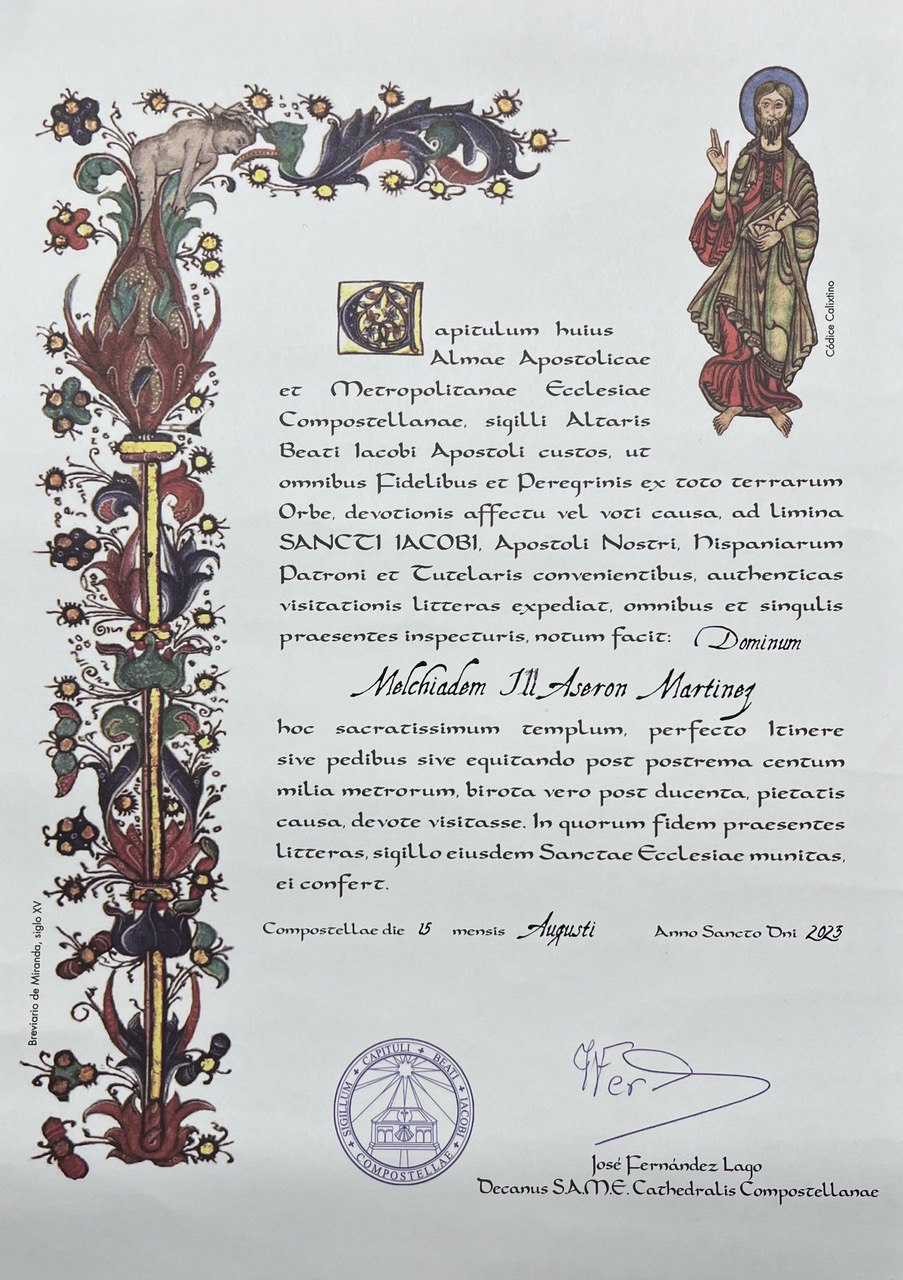 Melquiades Aserón
Melquiades Aserón This document, written in Latin, certifies that a pilgrim has completed at least 200km by bike or at least 100km on foot or - wait for it - horseback (no, we never saw anyone on horseback, but since people have been riding horses for far longer than cars, it makes sense to still include that option).
The fun part is that they also translate the pilgrim’s name into Latin - ancient Romans would call me “Melchiadem”.
A requisite for the issuance of this certificate is that the pilgrim must declare on the Cathedral’s online registration page that they undertook the pilgrimage for religious and/or spiritual reasons.
Certificado de Distancia
 Melquiades Aserón
Melquiades Aserón Pilgrims can also get this document, written in Spanish, which certifies the actual distance that a pilgrim has traveled to get to Santiago de Compostela, calculated from the starting point indicated on their Credencial.
Credencial de Peregrino
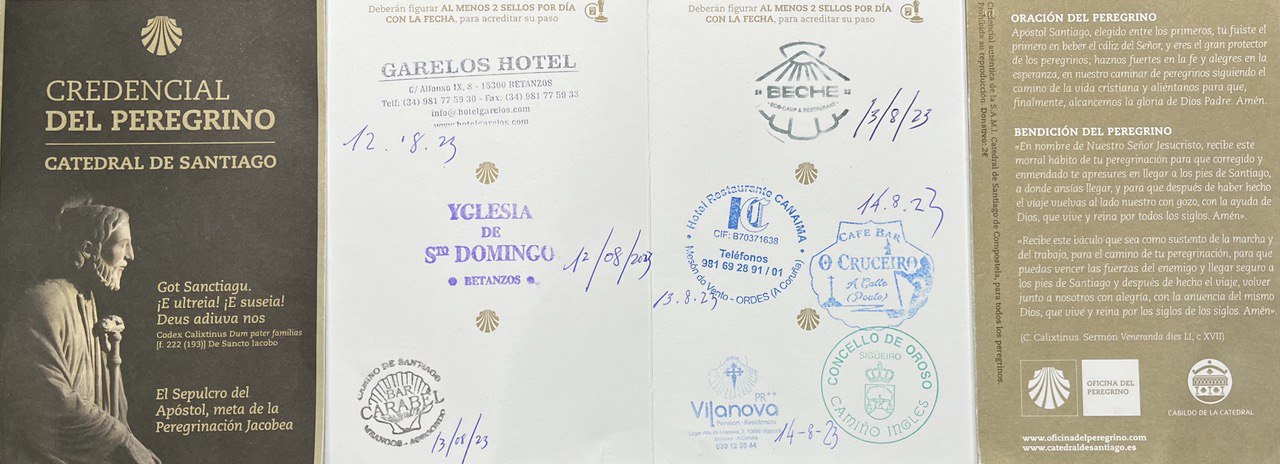 Melquiades Aserón
Melquiades Aserón Both certificates require the Credencial de Peregrino, a pilgrim’s passport of sorts that is acquired at the start of the pilgrimage and stamped along the way with the seal of establishments that cater to pilgrims. This document is also required to access public albergues.
Ours came with the welcome pack from Tu Buen Camino, but it can be bought for up to €2 at the various starting points such as Ferrol (Camiño Inglés) and Sarria (Camiño Francés).
This year, the document has a QR Code which takes pilgrims to the Cathedral’s online registration page for the Compostela and the Certificate of Distance - very techy!
More to Come!
This is just the first in a series of posts that I will be publishing about this year’s Camino journey - stay tuned!
